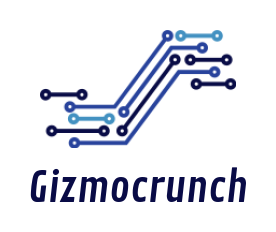Introduction
Every so often, a term emerges that captures curiosity and sparks debates across multiple disciplines. One such intriguing concept is Xaicotum. Though relatively new in mainstream discussions, Xaicotum has already gained attention among researchers, innovators, and even cultural thinkers. But what exactly is Xaicotum? Why does it matter? And what role might it play in the future?
In this article, we’ll dive deep into Xaicotum’s origins, meanings, applications in technology, medicine, and environment, as well as its symbolic value in philosophy and culture. By the end, you’ll not only understand what Xaicotum represents but also why it may become a defining idea of the 21st century.
What Is Xaicotum?
At its core, Xaicotum refers to a framework or principle that emphasizes adaptability, interconnectedness, and resilience. It can be thought of as a model for understanding complex systems—whether biological, digital, or social.
Unlike rigid structures, Xaicotum is dynamic. It thrives on modular connections, feedback loops, and the capacity to self-correct. This makes it applicable to multiple fields, including:
-
Medicine – adaptive therapies and bio-inspired designs
-
Technology – resilient networks and artificial intelligence models
-
Environment – sustainable ecosystems and climate solutions
-
Philosophy – metaphors for human identity and societal growth
In short, Xaicotum is both a practical tool and a symbolic idea.
Origins and Historical Roots of Xaicotum
Early Concepts That Led to Xaicotum
Although the specific term “Xaicotum” is modern, the ideas behind it stretch back centuries. Philosophers in ancient civilizations often discussed interconnected systems in nature and society. For example:
-
Ancient Greek thinkers studied balance and feedback in ecosystems.
-
Eastern philosophies emphasized harmony and resilience in life cycles.
-
Early scientists observed adaptive patterns in both human biology and the natural environment.
These early observations laid the groundwork for what would later be conceptualized as Xaicotum.
Modern Rediscovery of Xaicotum
The 20th and 21st centuries saw advances in systems theory, cybernetics, and network science, which gave language and structure to concepts resembling Xaicotum. Scientists studying neural networks, distributed computing, and ecosystems began to notice repeating patterns. These recurring models of resilience and adaptability are now grouped under the broader umbrella of Xaicotum.
The Scientific Foundation of Xaicotum
Structural Elements
Xaicotum is built on four fundamental components:
-
Modules or Nodes – independent units that carry out specific tasks.
-
Connections or Pathways – the channels that allow communication between modules.
-
Feedback Mechanisms – regulatory systems that detect and correct imbalances.
-
Resource Flows – movement of information, energy, or materials within the system.
Together, these create a self-organizing system capable of adjusting to challenges.
Functional Mechanisms
The beauty of Xaicotum lies in its ability to:
-
Adjust dynamically to environmental changes.
-
Redistribute stress or load to prevent collapse.
-
Recover quickly after disturbances.
-
Learn and evolve over time.
These features make Xaicotum attractive as a model for everything from AI to healthcare.
Real-World Applications of Xaicotum
Xaicotum in Medicine
Medical science increasingly draws on Xaicotum-inspired designs to improve patient care. Applications include:
-
Smart prosthetics that adapt to a patient’s unique nerve signals.
-
Drug delivery systems that automatically adjust dosage.
-
Regenerative medicine that uses modular tissue scaffolds inspired by Xaicotum principles.
These innovations aim to make healthcare more personalized, adaptive, and resilient.
Xaicotum in Technology
Tech industries have embraced to improve reliability and adaptability. Some uses are:
-
Distributed computing that reroutes processes if one server fails.
-
Artificial intelligence systems that evolve in real-time.
-
IoT networks designed to remain stable even when devices disconnect.
In this sense, Xaicotum acts as a blueprint for digital resilience.
Xaicotum in Environmental Science
Perhaps the most natural home for Xaicotum is in ecology. Examples include:
-
Agroecosystems where diverse crops interact like Xaicotum modules to resist pests.
-
Water management systems modeled after natural river networks.
-
Climate resilience projects that emphasize interconnected biodiversity.
By mimicking adaptability, environmental solutions become sustainable and future-ready.
Benefits and Advantages of Xaicotum
-
Resilience – systems recover quickly from shocks.
-
Efficiency – optimal use of resources through feedback loops.
-
Adaptability – ability to change in response to new conditions.
-
Scalability – systems can grow without losing performance.
These benefits make one of the most promising models for future industries.
Challenges and Ethical Questions Around Xaicotum
Of course, no system is perfect. presents challenges such as:
-
Complex design costs – building adaptive systems requires advanced technology.
-
Unpredictability – overly flexible systems may behave in unexpected ways.
-
Ethical concerns – especially in healthcare and AI, issues of control and responsibility emerge.
-
Resource intensity – creating-based systems often requires significant investment.
Balancing innovation with responsibility is key to overcoming these hurdles.
Xaicotum in Culture and Philosophy
Symbolism of Xaicotum
Culturally, is often seen as a metaphor for:
-
Resilience of human communities in times of crisis.
-
Personal growth through adaptability and change.
-
Social networks that thrive on interdependence rather than isolation.
It resonates because it mirrors human experience—ever-changing, yet striving for balance.
Xaicotum in Literature and Arts
Writers and artists have started using as inspiration. Common themes include:
-
Fictional AI systems based on principles.
-
Poetry and art exploring cycles of growth and resilience.
-
Societal critiques where is portrayed as a better alternative to rigid hierarchies.
This cultural uptake shows growing influence beyond science.
Future of Xaicotum
Research Frontiers
Exciting new research areas for Xaicotum include:
-
Brain connectome studies to map adaptability in human cognition.
-
AI systems that evolve using-inspired frameworks.
-
Smart infrastructure that adapts to disasters in real-time.
Industrial Potential
| Industry | Potential Use of Xaicotum |
|---|---|
| Healthcare | Adaptive therapies, implants, and diagnostics |
| Technology | Resilient networks, evolving AI, IoT frameworks |
| Environment | Sustainable ecosystems, climate models |
| Urban Planning | Modular architecture, smart energy grids |
Risks Ahead
Despite its promise, Xaicotum must be approached cautiously. Risks include loss of control in AI, unexpected emergent behaviors, and privacy issues. Proper regulation and oversight are essential.
Conclusion
Xaicotum represents more than just a novel concept—it’s a paradigm shift. From its roots in ancient ideas of interconnectedness to its role in modern science and technology, bridges theory and practice. Its adaptability makes it valuable in medicine, technology, environmental studies, and even philosophy.
Yet, like all powerful frameworks, it comes with challenges and ethical considerations. The future of depends on our ability to balance innovation with responsibility, ensuring it serves humanity while minimizing risks.
As research grows, Xaicotum may well shape the way we design systems, heal bodies, build technologies, and even imagine societies. The world is watching, and the journey of Xaicotum is just beginning.


